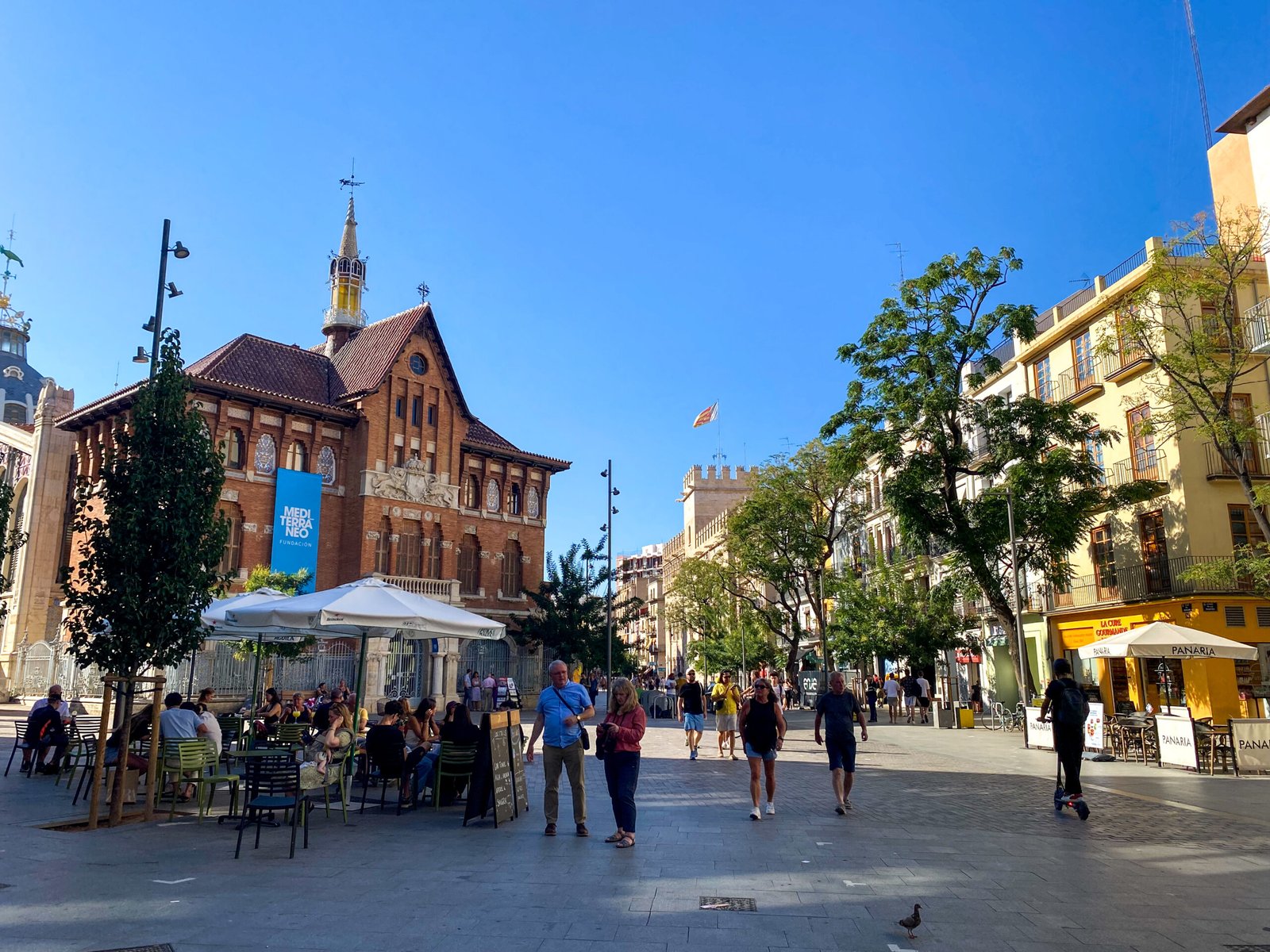
History of the Central Market of Valencia
The origins of the market
The origins of Valencia’s Central Market date back to the 13th century, when there was already an open-air market in the same space, known as the Mercado Nuevo (New Market). This commercial exchange area was vital for the development of the city, as it was where agricultural and livestock products were traded. For centuries, this activity expanded informally, until the early 20th century, with the growth of the population and the need to organise trade, the idea of constructing a permanent building arose. In 1910, an architectural competition was held to design the new covered market, and in 1914 the first stone was laid, although work was not completed until 1928, when it was finally inaugurated.
Modernist architecture: A gem of Valencia
The Central Market is considered one of the most representative works of Valencian modernism. It was designed by the architects Francesc Guardia i Vial and Alexandre Soler i March, influenced by the Catalan modernist movement. The structure of the market is notable for its use of iron, glass and ceramics, typical elements of this style. Its spectacular central dome, which reaches a height of 30 metres, is adorned with floral and plant motifs, while its stained-glass windows let in natural light, creating a warm and vibrant atmosphere. The use of glazed ceramics on the exterior façades pays homage to the Valencian artisan tradition. The building is not only functional, but also aesthetically impressive, standing out among the city’s urban architecture.
The evolution of the market over the years
Since its inauguration in 1928, the Central Market has evolved to adapt to the needs and changes in Valencian society. In its first decades, the market was essential for the supply of the city, as it served as the main purchasing point for fresh products. As Valencia grew and food distribution methods changed, the market maintained its relevance, attracting both locals and tourists. Over the years, it has undergone several refurbishments and modernisations, the most significant of which was in the 2000s, when its facilities were renovated without altering its historic essence. Today, the market is not only a centre of commerce, but also a tourist and cultural attraction, maintaining its identity as the commercial and social heart of Valencia.
A Stroll through Valencia's Central Market: What to See and Do
Market Sections: Fruit, vegetables, meat and fish
Valencia’s Central Market is organised into different sections, each specialising in fresh, high quality products. As you walk around the market, you will find:
Fruit and vegetables. In this area, visitors can find a huge variety of fresh, seasonal products, many of which come from the Huerta Valenciana, one of the most fertile agricultural areas in Europe. Citrus fruits, such as oranges and mandarins, which are an emblem of the region, stand out, as well as vegetables typical of the Mediterranean diet.
Meat. In the meat section, you can find fresh cuts of beef, pork, lamb and chicken, along with a selection of derived products, such as handmade sausages and cured hams. Iberian ham is especially popular, being one of the most appreciated products by locals and visitors alike.
Fish and seafood. One of the most dynamic areas of the market is the one dedicated to fish and seafood. Valencia, being close to the Mediterranean, offers a wide variety of fresh seafood, such as sea bream, tuna, octopus and mussels. It is the perfect place to buy the key ingredients for traditional Valencian dishes such as seafood paella.
Iconic stalls and typical products
The market has many iconic stalls, some of which have been in operation for decades and are known for the quality of their products. Among the most representative are:
La Lonja del Pescado. Renowned for its selection of fresh seafood, with a special focus on native Mediterranean fish.
El Racó del Vi. Famous for its range of Valencian wines, where visitors can buy red wines, white wines and cavas from the region.
Central Ham Stall. An outstanding place to buy Iberian hams, cured meats and artisan cheeses from all over Spain.
Among the most popular typical products are horchata and fartons, traditional Valencian sweets, as well as the region’s extra virgin olive oil, spices such as saffron (key to paella), and a wide variety of artisan products.




